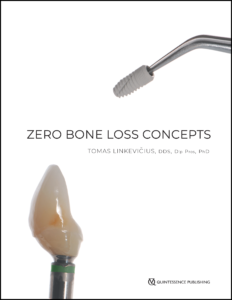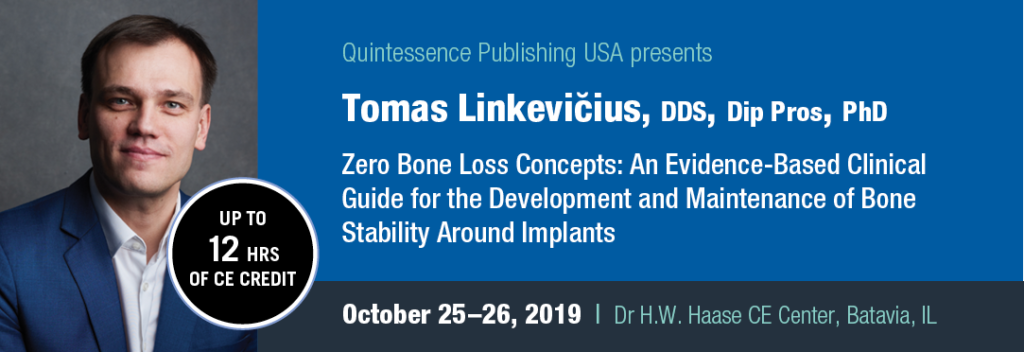With today’s scientific advancements, it’s hard to appreciate the hygiene practices that help us avoid life-threatening illnesses. We forget that for the majority of human history, lifespans weren’t nearly as long as they are now. It’s equally difficult to imagine how people once believed foul odors, evil spirits, astrological arrangements, and bathing could cause disease epidemics. Bloodletting, the popular treatment practice used to purge the “bad blood” believed to cause infection, is simply horrifying to think about. These ideas may sound outrageous today, but people in the Middle Ages accepted them just as fervently as we rely on our hand sanitizers, personal hygiene, and food and waste safety measures of the 21st century.
Continually testing and challenging these scientific paradigms is a cornerstone of scientific advancement.
In the 1800s, germ theory replaced the centuries-old miasma theory of dangerous air clouds. Thanks to the discoveries of John Snow, Louis Pasteur, and Robert Koch, we now know that microscopic organisms—bacteria and viruses—are the true causes of illness. Armed with this knowledge, we have developed ways to treat and prevent their invasion into the body, thereby contributing to longer, healthier lives.
A hundred years from now, people may be just as quick to dismiss germ theory in favor of new scientific breakthroughs, but that’s the beauty of progress. Continually testing and challenging these scientific paradigms is a cornerstone of scientific advancement. Dr Tomas Linkevičius, DDS, Dip Pros, PhD, set out to do just that with Zero Bone Loss Concepts, his revolutionary new book on implant dentistry. His research has uncovered breakthrough treatment practices to prevent bone loss, has examined the multitude of factors that contribute to it, and has determined that multidisciplinary clinicians are uniquely positioned to treat it.
Zero Bone Loss
“The concept that bone loss is unavoidable should be abandoned.”
Crestal bone loss has accompanied implant treatment for so long that it has historically been considered the natural result. In fact, this “norm” has been codified. When Dr Linkevičius was a postgraduate resident of prosthodontics, almost 15 years ago, he was met with this existing paradigm.
“More experienced colleagues explained to me that this bone loss is considered to be unavoidable and urged me to just accept this fact,” Dr Linkevičius recalls. “However, for me, it was obvious that there must be reasons for it and that those factors should be researched and explained.”

Different reactions of crestal bone level to dental implants. (a) Zero bone loss. (b) Stable remodeling. (c) Progressive bone loss. (d) Bone growth.

(a and b) Crestal bone stability 7 years after augmentation and placement of implants without platform switching or a conical connection. The 7-year follow-up shows bone growth and intensive corticalization of bone.
He and his team began digging deeper into the interworkings of unavoidable bone loss and soon made discoveries that proved otherwise. Their results dared to challenge the existing paradigm, dismissing the old standards of implant dentistry where 1 mm of bone loss is considered normal.
“The concept that bone loss is unavoidable should be abandoned,” Dr Linkevičius explains.
Zero bone loss, defined as long-term crestal bone stability, plays an important role in implant function. Bone stability is one key factor toward a good esthetic outcome, leading to patient satisfaction. Dr Linkevičius’s research stresses that the goal should always be prevention of bone loss, especially in two major situations that require bone levels be as stable as possible: implants in the esthetic zone and the use of short implants. The shorter the implant, the more dangerous the same amount of bone loss.

Remineralization of crestal bone around implants (V3, MIS). (a) Delivery day. (b and c) After 1 year.
Dr Linkevičius and his team have developed four ways to increase vertical soft tissue thickness, which is one of the critical surgical factors for ensuring zero bone loss. These are outlined in the book with a chapter devoted to each method. The text also looks a step further than bone loss prevention—there could even be remineralization or bone growth.

Different methods of vertical soft tissue augmentation. (a and b) Flattening of the alveolar ridge. (c and d) Subcrestal implant placement. (e and f) Tent-pole technique. (g and h) Vertical augmentation.
Crestal Bone Loss: A Multifactorial Issue
Now that the concept and cause of bone loss can be better understood through the text and through Dr Linkevičius’s worldwide lectures, a common focus of readers and attendees is to pinpoint a single cause.
“Crestal bone loss is a multifactorial issue, and there is no single most important factor.”
“When I hear lecturers talking about the most important factor, or audience members asking to name one, I immediately perceive a lack of deep understanding of the subject,” Dr Linkevičius says. “I want readers to understand that crestal bone loss is a multifactorial issue, and there is no single most important factor.”
To demonstrate this in the text, he describes an apple metaphor.
“Imagine a basket of apples,” he says. “Each apple represents a separate factor that influences crestal bone stability. The purpose of research is to take one apple out of the basket and study it alone, eliminating other confounding factors. Clinical studies must be designed so that the factor in question—the single apple—can be studied as objectively as possible. The difficult part is that after research is complete, the apple must be returned to the basket, meaning that in clinical reality all factors operate simultaneously.”
The Value of the Multidisciplinary Clinician
Dr Linkevičius was trained as a prosthodontist, and for the first 5 years of his professional career, his practice remained limited to prosthetic work. This seemed to work for a while, until he hit a wall.
“I soon realized that without the proper surgical knowledge and techniques, I simply could not deliver the results that my patients deserved,” Dr Linkevičius says. “I strongly feel that whenever possible, it is ideal for all treatment to be performed by the same specialist who possesses knowledge of implant design, biology, and prosthetics and can therefore achieve zero bone loss around every implant.”
“Respecting surgical factors is simply not enough. We need to take prosthetic factors into consideration as well.”
To meet the needs of his patients, he set out to widen his skillset, adding “implant dentist” to his résumé. Subsequently, his implant research has benefitted from his personal/professional journey, and his book reflects those professional practices.
“If we want to have crestal bone stability after restoration of implants, respecting surgical factors is simply not enough,” Dr Linkevičius says. “We need to take prosthetic factors into consideration as well—they are equally important.”
Put another way, “A surgeon without prosthetic knowledge and a prosthodontist lacking surgical awareness may never accomplish the most desired results, as both parts are equally responsible for bone stability.”
From establishing crestal bone stability through surgical factors to maintaining that stability through prosthetic factors, the book combines surgical and prosthetic advice, making it a unique, one-stop resource of clinical procedures backed by solid clinical evidence.
Impossible Is Nothing
Dr Linkevičius’s goal for Zero Bone Loss Concepts is that clinicians thoroughly understand and can practically apply the zero bone loss breakthrough, multifactorial concept, and multidisciplinary value. However, he is all too aware that his research into implant dentistry has only touched the tip of the iceberg on crestal bone loss. While his book presents the latest on the concept to date, the scientific paradigm he has set in motion—away from beliefs of the past 30 years and toward new research—will continue to change and shift over time. The process of compiling his research into this book has intimately shown him how scientific research is constantly evolving in a never-ending cycle. Case in point: New information was being generated while the book was being printed, which will inform future editions.
Until then, Dr Linkevičius stands by a favorite saying that “impossible is nothing” when it comes to improving crestal bone loss levels around implants. He encourages clinicians to discover this for themselves by applying the concepts detailed in the book.
“The definition of ‘best’ treatment is not permanent,” he stresses.
He is determined to continue making new versions of that “best” treatment possible for practicing clinicians for years to come. Clinicians may get an inside look at the latest treatment practices in October at his upcoming workshop at the Dr H.W. Haase CE Center in Batavia, IL.
 Tomas Linkevičius, DDS, Dip Pros, PhD, is a professor at Vilnius University in Vilnius, Lithuania, where he completed his postgraduate studies in prosthetic dentistry and obtained his prosthodontist specialty. Dr Linkevičius received his dental degree in 2000 from Kaunas Medical University in Kaunas, Lithuania, and defended his doctoral dissertation at Riīga Stradins University in Rīga, Latvia, in 2009. Dr Linkevičius has authored dozens of publications in international peer-reviewed journals. He has also contributed to several books, including Cementation in Dental Implantology (Springer, 2015) and Implants in the Aesthetic Zone (Springer, 2019). During the course of his research, Dr Linkevičius developed zero bone loss concepts, an evidence-based clinical protocol that demonstrates how to achieve and maintain crestal bone stability around dental implants. He lectures internationally on this topic and is an active member of several professional organizations, such as the Academy of Osseointegration and the European Academy of Osseointegration. Dr Linkevičius maintains a practice specializing in prosthodontics and implant dentistry and continues to study zero bone loss concepts at the Vilnius Research Group.
Tomas Linkevičius, DDS, Dip Pros, PhD, is a professor at Vilnius University in Vilnius, Lithuania, where he completed his postgraduate studies in prosthetic dentistry and obtained his prosthodontist specialty. Dr Linkevičius received his dental degree in 2000 from Kaunas Medical University in Kaunas, Lithuania, and defended his doctoral dissertation at Riīga Stradins University in Rīga, Latvia, in 2009. Dr Linkevičius has authored dozens of publications in international peer-reviewed journals. He has also contributed to several books, including Cementation in Dental Implantology (Springer, 2015) and Implants in the Aesthetic Zone (Springer, 2019). During the course of his research, Dr Linkevičius developed zero bone loss concepts, an evidence-based clinical protocol that demonstrates how to achieve and maintain crestal bone stability around dental implants. He lectures internationally on this topic and is an active member of several professional organizations, such as the Academy of Osseointegration and the European Academy of Osseointegration. Dr Linkevičius maintains a practice specializing in prosthodontics and implant dentistry and continues to study zero bone loss concepts at the Vilnius Research Group.
 Zero Bone Loss Concepts
Zero Bone Loss Concepts
Tomas Linkevičius
Bone loss is still a major issue that dentists encounter, but it is a complication that can be prevented. By combining clinical experience with peer-reviewed scientific evidence, the author of this book has put together a guide that any implant specialist will find invaluable to prevent bone loss in their patients. Different strategies are presented that can be used to achieve zero bone loss years after treatment. Because successful treatment depends on both the surgical and prosthetic components, the book is divided into two parts, each focusing in depth on what must be done in each phase to promote bone stability. Case presentations detail many types of clinical situations, implant choices, and prosthetic solutions, all backed by evidence-based clinical studies that have proven success.
304 pp; 1,231 illus; ©2019; ISBN 978-0-86715-799-4 (B7994); US $198
Contents
Developing Crestal Bone Stability • Implant Design • Implant Depth • Vertical Soft Tissue Thickness • Subcrestal Implant Placement • Flattening Bone • Tent-Pole Technique • Vertical Soft Tissue Augmentation • Attached Tissues • Cement- and Screw-Retained Restorations • Individual Abutments • Fixed Partial Dentures • Angulated Abutments • Emergence Profile • Prosthetic Materials • Subgingival Materials • Supragingival Materials
This article was written by Sarah Mondello, Quintessence Publishing.
©2019 BY QUINTESSENCE PUBLISHING CO, INC. PRINTING OF THIS DOCUMENT IS RESTRICTED TO PERSONAL USE ONLY. NO PART MAY BE REPRODUCED OR TRANSMITTED IN ANY FORM WITHOUT WRITTEN PERMISSION FROM THE PUBLISHER.


